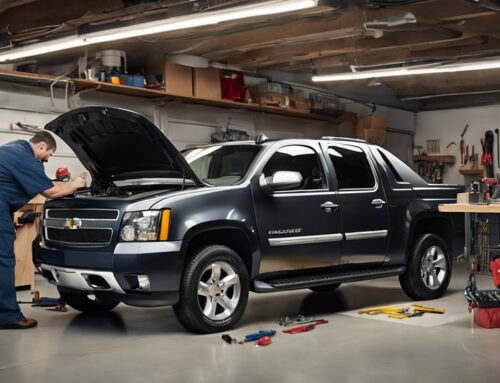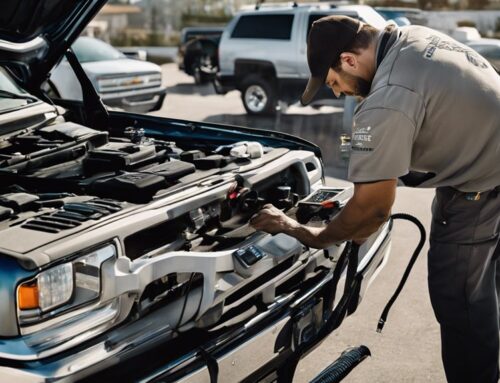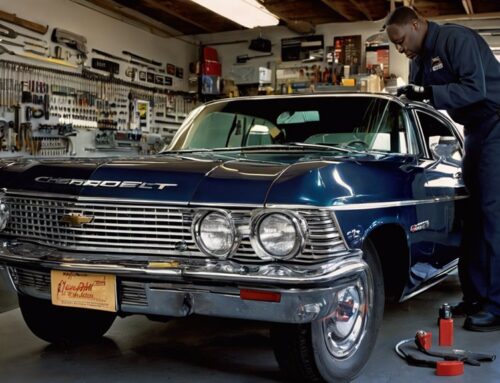Have you ever been stuck in a situation where you’re trying to start your car, but the key won’t turn in the ignition? It’s an incredibly frustrating experience – and one that can leave you feeling helpless. Don’t worry, though! There are some simple steps you can take to figure out why your key is stuck in the ignition and how to get it out safely. In this article, we’ll discuss what might be causing the issue and provide helpful advice on getting your key unstuck. So if you’ve got a key stuck in the ignition, read on for answers!
Key Stuck In Ignition: Diagnose Your Problem
If you’re having trouble getting your key out of the ignition, it’s important to properly diagnose what’s causing the problem. The first step is identifying if it’s a mechanical or electrical issue. If you can’t turn the car on or off and the steering wheel won’t lock, then it’s likely an electrical issue that requires professional assistance. On the other hand, if you can still start and stop the engine but just cannot get the key out, then there may be a mechanical issue such as a broken part or debris blocking something in the ignition cylinder.
In either case, make sure to check for any visible signs of damage like bent parts or wires coming out from under the dashboard before attempting any repairs. Also look around inside your vehicle for objects that could have fallen into the ignition area which might explain why your keys are stuck – sometimes coins, paperclips, screws and even lollipop sticks can get lodged between various components! Taking these steps will help you determine how best to proceed so that you don’t cause further problems down the line.
Is Your Car Properly Turned Off?
It’s important to make sure your car is properly turned off before attempting any further steps. If the key won’t turn in the ignition, chances are you haven’t completely turned off the engine. To confirm that your vehicle has been switched off, check several things: look for a light on the dashboard indicating whether it still running; listen for any sound coming from the engine; and feel if there is any vibration emanating from beneath the hood.
Once you’ve confirmed that your car is indeed off, then you can begin to take other measures to try and remove the stuck key. Make sure you’re not putting too much pressure or force when trying to remove it as this could damage some of the components within the ignition system. You can also spray WD-40 lubricant into the area around where the key meets with its slot in order to ease out stubborn keys.
Is Your Steering Wheel Locked In Place?
Now that you’ve established your car is properly turned off, the next step is to make sure the steering wheel is locked in place. If it’s not, then turning the key back and forth won’t help with getting it out of the ignition. So take a look at the steering wheel and observe if there are any signs of movement or slippage when attempting to turn it.
If it doesn’t move easily, then use both hands on either side of the wheel and gently rock it back and forth until it loosens up. Once you feel some give, try again to remove the key from the lock cylinder by jiggling it around as before. With luck, this will release the stuck key and allow you to extract it from its current position.
Is The Key Broken In The Ignition?
If the key appears to be stuck in the ignition and won’t turn, it’s possible that it may be broken. It is important to identify if the issue is with the lock cylinder or with the key itself before attempting any fixes. To check whether the problem lies with your key, try using another one if you have a spare. If it fits and turns in the ignition as expected, then you know that there is an issue with your current key.
In this case, you will need to get a replacement cut at a locksmith shop or auto parts store. You can also take advantage of some online services like KeyMe which offer mail-in replacements for lost car keys. Be sure to bring along proof of ownership when getting new keys made so they can verify that they are being used by an authorized individual.
Is There Something Wrong With The Ignition Cylinder?
Once you’ve determined that the key isn’t broken in the ignition, it’s time to consider if there is something wrong with the ignition cylinder. If your key won’t turn, then this could be a sign of a more serious issue and requires immediate attention.
First, check for any signs of physical damage on the outside of the cylinder or around its edges. Is it discolored? Are there scratches or dents? This can indicate that someone has tried to tamper with the lock mechanism and may have damaged it in some way.
If everything looks normal from the outside, try using different keys (if available) to see if one works better than another. It might be that over time one particular key has become worn down and no longer fits properly into the cylinder. If none of these solutions work, you should contact an expert locksmith immediately who will be able to help diagnose and solve whatever problem is causing your key to get stuck in the ignition.
Is The Keyway Blocked?
If your key is stuck in the ignition, the next step is to check if the keyway is blocked. To do this, you should turn off any accessories that may be draining power from the car battery and then start by checking if anything has fallen into the area of where the key goes into the ignition. You can use a flashlight to look around for any debris or objects that could be blocking it. If nothing appears to be obstructing it, try jiggling the steering wheel back and forth while also attempting to insert and remove the key from its slot several times. This could help dislodge whatever might be preventing it from turning properly. If none of these options work, you may need to seek professional assistance.
Broken Key Extraction
When a key gets stuck in the ignition, it can be difficult to remove. If you try to jiggle or force the key out of its place, you could end up damaging either the key or the ignition itself. In this case, you’ll need to seek professional help from an automotive locksmith. They have advanced tools that allow them to extract broken keys without causing any additional damage.
The locksmith will first inspect your car’s make and model before attempting to pull out the broken piece. Once they’ve determined which tool is best for the job, they’ll use specialized pliers or tweezers to carefully remove the pieces of metal lodged inside the lock cylinder. The entire process requires skill and precision since there’s no room for error when dealing with delicate components like these. Thankfully, most locksmiths are highly trained and experienced professionals who know how to handle such issues properly. All you need to do is relax while they take care of everything else!
Ignition Cylinder Repair Or Replacement
If your key is stuck in the ignition, it could be due to a problem with the cylinder. This usually happens when the pins inside become worn or bent out of shape over time. If this is the case, you’ll need to have either a repair or replacement done by an experienced auto locksmith.
Repairing the existing cylinder involves removing it from the car and taking it apart piece-by-piece in order to straighten any bent pieces and replace any broken ones. It’s also important to determine whether there are any underlying issues that need to be addressed such as rust or corrosion. Replacing the entire unit requires slightly more work but can often provide better results since all new parts will ensure proper functioning for years to come. In either case, make sure you use a reputable locksmith who specializes in automotive lock repairs so they can get your vehicle back on the road quickly and safely!
Lubricate Car Key
When dealing with a stuck key in the ignition, one of the first things to try is lubricating the car key. This can help free it from whatever may be causing it to get stuck and also prevent rust or corrosion from forming on the key itself. To do this, you’ll need some WD-40, graphite powder, or other type of spray lubricant that’s safe for use on metals.
Spray the lubricant onto your car key and insert into the cylinder. Then turn it back and forth gently several times to help loosen any particles that might have been causing it to stick. If there are any noticeable problems with the lock cylinder itself such as rust or grime buildup, then wipe away these using a damp cloth before reinserting your car key again. With just a few simple steps, you should find that your stuck key has been freed up and is working properly again!
Frequently Asked Questions
What Kind Of Lubricant Should I Use To Lubricate My Car Key?
When a car key gets stuck in the ignition, it can be extremely frustrating. One possible solution is to try lubricating the key. But what kind of lubricant should you use?
There are several types of lubricants available for this purpose, ranging from commercial products designed specifically for cars to household items like WD-40 or graphite powder. Ideally, it’s best to use a product that won’t damage your vehicle, so look for one with an automotive grade label such as Liqui Moly or Wynn’s Engine Lubricant. If these aren’t available, then any light oil such as 3-in-1 oil will do the job just fine. Just make sure not to overdo it – too much lubricant can gum up the works and cause more problems than solutions!
Once you have chosen your lubricant, apply a small amount directly onto the key itself before attempting to insert it into the lock cylinder. This should help loosen any dirt or debris that may be causing the issue and get your car running again in no time.
What Are The Signs Of A Faulty Ignition Cylinder?
One of the signs that you may have a faulty ignition cylinder is difficulty in inserting or turning the key. If your car key does not easily fit into the ignition and/or it takes an excess amount of force to turn it, this could indicate that something is wrong with the ignition cylinder. Additionally, if you hear any grinding noises while attempting to insert or turn the key, then this could be another sign of trouble.
It’s also important to pay attention to whether or not all accessories like power windows and heated seats are working properly when you attempt to start your vehicle. If these functions don’t work as they should when you try to start up your engine, there may be an issue with one or more components within the ignition system–including possibly the cylinder itself.
If any of these symptoms sound familiar, it’s best to take your car in for diagnosis by a professional mechanic before any further damage can occur.
What Do I Do If My Steering Wheel Is Locked In Place?
If your steering wheel is locked in place, it could indicate that there’s a problem with the ignition cylinder. The first step to take is to check if any of the other car accessories are functioning properly – such as the headlights or interior lights. If they’re not working, then this suggests an electrical issue and you should contact a qualified mechanic immediately.
The next step is to assess whether or not the key will turn at all. If so, try gently rocking the wheel back and forth while turning the key in order to see if it unlocks. You can also attempt to use some lubricant spray on the lock itself. It may help in loosening up its mechanisms. However, if none of these measures work, it’s best to call a professional locksmith who specializes in cars and have them come out and diagnose the situation for you.
In certain cases, when attempting repairs on your own isn’t possible due to safety concerns or complexity of the task, calling a trained expert can be beneficial in ensuring that your vehicle remains secure until any underlying issues are addressed correctly. Be sure to ask around locally for reputable options before making a decision on which service provider to hire.
Is It Possible To Repair My Ignition Cylinder Without Replacing It?
It is possible to repair an ignition cylinder without replacing it, but it depends on the severity of the damage. Ignition cylinders wear out over time and can become stuck or difficult to turn due to a variety of factors such as age, heavy usage, dust and dirt buildup, faulty wiring, etc. If your steering wheel is locked in place, chances are that you have a problem with your ignition cylinder.
In some cases, the issue may be able to be repaired by having a professional adjust the internal components of the cylinder itself. This involves removing the cylinder from its housing and making adjustments to optimize performance and reduce friction between moving parts. Additionally, lubricating these parts can help ensure smooth operation for years to come. However if there is significant damage present then replacement might be necessary so as not to compromise safety.
No matter what type of repair work needs to be done on your ignition cylinder it’s important that you seek out professional assistance rather than attempting repairs yourself since this could lead to further complications down the line or even cause irreparable harm. Getting reliable advice from a trusted mechanic will help determine whether you need only minor tuning up or full-on replacement of your existing ignition system.
How Can I Prevent My Key From Getting Stuck In The Ignition In The Future?
It’s a frustrating experience when your key gets stuck in the ignition. You have to figure out how to fix it and then take steps to ensure that it doesn’t happen again. We’ll look at both of these issues, so you can get back on the road quickly and safely.
First, let’s tackle prevention: there are several ways you can prevent this from happening again. First, make sure the ignition cylinder is lubricated regularly with silicone-based oil or graphite powder – whichever is recommended for your vehicle model. Additionally, check for signs of wear such as any debris lodged between grooves in the cylinder and clear it out if necessary. Finally, be sure not to force your key into the ignition slot because doing so could damage internal parts and lead to further problems down the line.
If despite these precautions your key still gets stuck in the ignition occasionally, there are some easy DIY fixes you can try before taking it to a mechanic shop. One option is wiggling the steering wheel while trying to turn the key – this will help disengage any binding mechanisms caused by dirt build up over time. Another option is gently tapping around the area where your car keys are inserted, which may free them up enough to unlock or turn without being forced too hard. If all else fails though, consider replacing or repairing your ignition cylinder entirely; luckily many repair shops offer same day service for this type of problem so you won’t have to worry about long wait times!
Conclusion
If your key is stuck in the ignition, it’s important to know what steps you need to take to get it out safely. Taking the time to understand why this may have happened and how to prevent it from occurring again can save you a lot of hassle and money down the line.
First things first, lubricating your car key with a lightweight oil can help reduce friction and make it easier for you to remove the key. It’s also wise to check signs of damage or wear on the ignition cylinder, as these can be indicative of faulty parts that should be replaced by an experienced mechanic. If your steering wheel is locked in place when the key is stuck, try rocking it back and forth gently while wiggling the key until it comes free.
It might not always be necessary to replace your entire ignition cylinder if something goes wrong; many mechanics offer repair services if there are only minor issues present. Lastly, taking preventive measures like regularly cleaning any dust off your keys or checking for rust buildup around the locks will go a long way towards avoiding future problems with getting keys stuck in ignitions.








